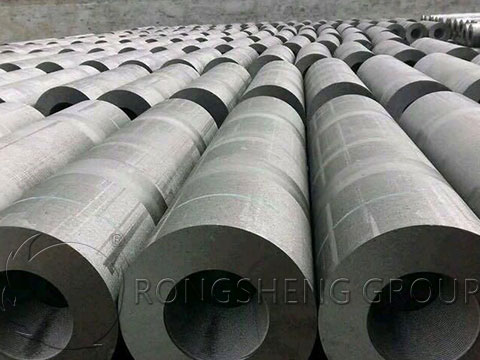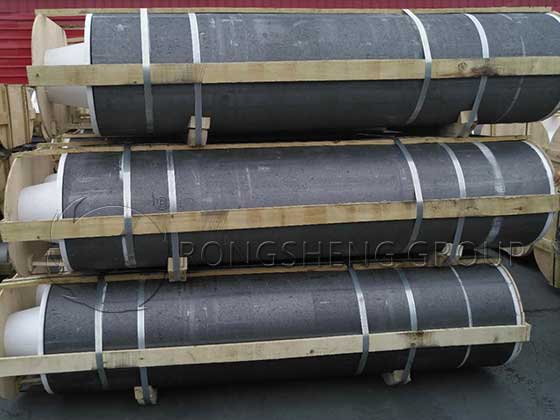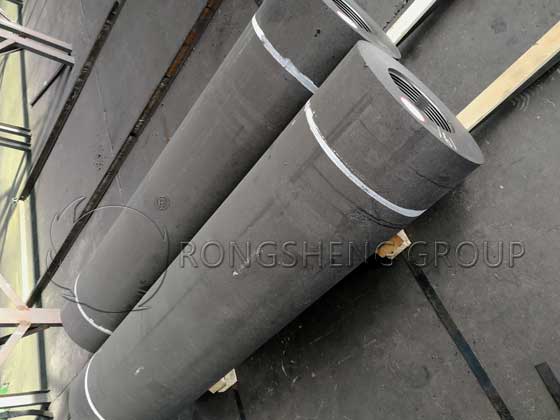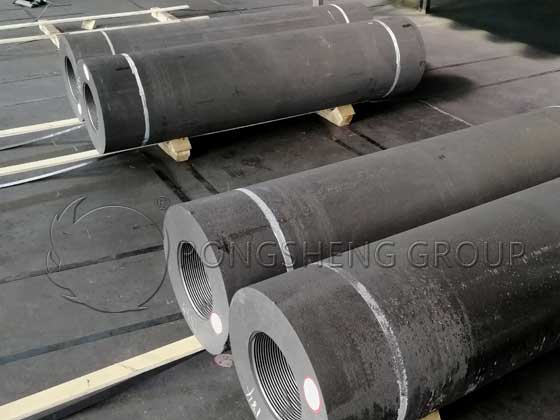UHP Graphite Electrodes: Powering the Future of Steel Production. In the ever-evolving steel industry, efficient and high-performance materials are essential for keeping production costs low while maintaining high output quality. Ultra-High Power (UHP) graphite electrodes are a crucial element in electric arc furnace (EAF) steelmaking. These electrodes are designed to handle the intense electrical currents and high temperatures required to melt scrap steel and convert it into molten steel. Among the most commonly used are UHP 600 electrodes, along with UHP300 and UHP200 high-power graphite electrodes, which have proven to be indispensable for modern EAF operations.
This blog post will dive deep into the characteristics, applications, and advantages of these UHP graphite electrodes, focusing on the UHP 600, as well as the UHP300 and UHP200 variants, particularly the 300 mm diameter (length 1800 mm) electrodes.

Understanding UHP 600 Electrode: Key Characteristics and Applications
What is a UHP 600 Electrode?
The UHP 600 electrode is a high-performance graphite electrode designed for use in the most demanding applications within electric arc furnaces. The “600” refers to the electrode’s diameter in millimeters, meaning these are large, powerful electrodes capable of handling immense electrical loads. These electrodes are typically used in large-scale steel production, where their capacity to carry high electrical currents enables efficient melting of scrap steel.
Graphite electrodes in UHP grades are distinguished by their ability to conduct electricity with minimal resistance while withstanding extremely high temperatures, often exceeding 3,000°C. UHP 600 electrodes are especially popular in furnaces where high-efficiency production is critical, allowing for faster melting times and increased production capacity.
Applications in Steelmaking
UHP 600 electrodes are typically used in large electric arc furnaces (EAFs) for mass steel production. Their size and capacity allow them to handle the high current levels necessary to melt significant amounts of scrap metal. These electrodes are often found in facilities where high tonnage steel production is required daily, providing the robustness and durability needed to meet such demands.
In addition to steelmaking, UHP 600 electrodes are also used in ladle furnaces, which are employed to refine and further process molten steel. The electrodes provide the energy required to adjust the chemical composition and temperature of the molten metal, ensuring that the final product meets the desired specifications.

High-Power Graphite Electrodes: UHP300 and UHP200
While UHP 600 electrodes are used in large-scale operations, UHP300 and UHP200 graphite electrodes also play a vital role in steel production. These smaller electrodes are designed for medium-sized and smaller furnaces, offering high-performance capabilities in a more compact form.
UHP300 Electrode
UHP300 electrodes have a diameter of 300 mm and are often used in medium-scale EAFs. These high-power electrodes provide efficient electrical conductivity and can operate at high temperatures, making them suitable for steel production that requires precision and efficiency but on a smaller scale than what UHP 600 electrodes handle.
The UHP300 electrode’s ability to maintain stable arcs and resist high thermal loads ensures that it provides excellent performance in medium-tonnage steel production environments. It is often used in combination with other UHP electrodes, depending on the specific requirements of the production process.
UHP200 Electrode
UHP200 electrodes, with a diameter of 200 mm, are typically used in smaller EAFs or as supplementary electrodes in larger operations. Despite their smaller size, UHP200 electrodes offer high electrical conductivity and durability. They are ideal for steel plants looking to optimize their production on a smaller scale while still benefiting from the advanced properties of UHP graphite electrodes.
UHP200 electrodes can also be used for specific refining processes, where smaller electrodes are required for precise temperature control and chemical refinement of the molten steel.
The Importance of Dia 300mm (Length 1800mm) Graphite Electrodes
The size of a graphite electrode plays a significant role in determining its performance in electric arc furnaces. Graphite electrodes with a 300 mm diameter and a length of 1800 mm are widely used in medium-scale EAFs due to their balance between size, power, and cost-efficiency.

Why Dia 300mm Electrodes?
Graphite electrodes with a diameter of 300 mm offer several advantages for steelmakers:
-
- Efficient Conductivity
The 300 mm diameter allows these electrodes to carry sufficient electrical current for medium-scale steel production. They ensure efficient energy transfer into the furnace, minimizing energy loss while maximizing furnace efficiency.
-
- Durability and Longevity
Graphite electrodes with a diameter of 300 mm and a length of 1800 mm are designed to withstand the high temperatures and mechanical stresses present in electric arc furnaces. Their durability helps reduce electrode consumption rates, which in turn lowers operational costs by minimizing the need for frequent replacements.
-
- Versatility in Applications
Dia 300mm graphite electrodes are versatile enough to be used in a range of steelmaking processes, including melting scrap steel and refining molten metal. Their size makes them suitable for medium-sized furnaces while still providing the high-power performance required for efficient production.

Advantages of Using UHP Graphite Electrodes in Steel Production
-
- High Electrical Conductivity
UHP graphite electrodes, whether UHP 600, UHP300, or UHP200, are known for their excellent electrical conductivity. This allows them to efficiently transfer electrical energy into thermal energy, ensuring that the furnace operates at optimal temperatures for melting steel. This efficiency directly translates into lower energy consumption and improved production speed.
-
- High Thermal Resistance
Graphite’s natural properties, including its high melting point, make UHP electrodes highly resistant to the intense heat generated in EAF operations. UHP electrodes can maintain their structural integrity under extreme conditions, ensuring they last longer and reduce furnace downtime caused by electrode replacements.
-
- Stability and Arc Control
UHP graphite electrodes provide stable arcs, a critical feature in steel production. Stable arcs ensure consistent furnace performance, reducing fluctuations that can lead to energy waste or variations in steel quality. This arc stability is essential for maintaining high production standards.
-
- Cost-Effectiveness
Despite their higher upfront cost compared to regular power (RP) electrodes, UHP electrodes offer long-term cost savings due to their superior durability and efficiency. Their ability to operate under high-power conditions reduces the frequency of electrode replacement, lowering maintenance costs and minimizing production downtime.
Conclusion: UHP Graphite Electrodes as a Cornerstone of Efficient Steel Production
UHP graphite electrodes, particularly UHP 600, UHP300, and UHP200, are essential components in modern steel production. Their superior electrical conductivity, thermal resistance, and durability make them ideal for electric arc furnaces of varying sizes. Whether it’s the large UHP 600 electrode for high-tonnage production or the versatile UHP300 and UHP200 electrodes for medium- and smaller-scale operations, these electrodes ensure efficient, cost-effective, and sustainable steelmaking.
For steelmakers aiming to optimize their production processes, investing in UHP graphite electrodes is a smart choice that leads to improved performance, lower costs, and higher output quality.
